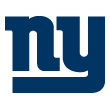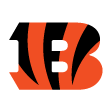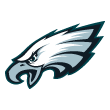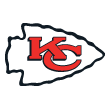- Joined
- Apr 7, 2013
- Messages
- 120,018
Health boost for NYG, GB, IND
Identifying which teams were hurt most, least by injuries in 2013
Updated: March 28, 2014, 12:04 PM ET
By Scott Kacsmar | Football Outsiders
Injuries not only shape a NFL team's current season, but also can have an impact on future team building. One injury can open a position the team thought was filled. For example, defensive tackle Henry Melton was a rising star in Chicago and played last season under the franchise tag before suffering a torn ACL just three games into 2013. He eventually signed with Dallas earlier this month.
Football Outsiders has created an Adjusted Games Lost (AGL) metric to calculate how much teams were impacted by injuries (2013 report can be found here). AGL is based on two principles: (1) injuries to starters, injury replacements and important situational reserves matter more than injuries to bench warmers; and (2) injured players who do take the field are usually playing with reduced ability, which is why Adjusted Games Lost is based not strictly on whether the player is active for the game or not, but instead is based on the player's listed status that week (IR/PUP, out, doubtful, questionable or probable).
Since 2008, AGL has had a year-to-year correlation of 0.29, which is neither strong nor insignificant. It just means what happened to a team injury-wise in one season is not a great predictor of what will happen the following season. There is a lot of randomness in how injuries, especially those of the severe variety, occur.
Last season's teams sitting on the extreme ends of the health spectrum are the ones most likely to regress to the average in 2014. The top and bottom three teams in AGL are the ones we will focus on here.

New York Giants (7-9)
AGL: 144.6 (32nd)
Recent AGL rankings: 2008 (eighth), 2009 (19th), 2010 (22nd), 2011 (26th), 2012 (25th)
Key injury: RB David Wilson (neck)
The Giants' 144.6 AGL is the highest in our database, which goes back to 2000. That's more than twice the 2013 league average of 70.2, which for the third straight year represented a new high. So perhaps injuries keep increasing or teams are more honest in reporting them.
New York was hit hardest at running back, interior offensive line and the secondary. Between an injured offensive line and M.A.S.H. unit at running back, it's no wonder the running game was so poor. David Wilson's herniated disk in his neck was the most severe injury and it could keep him out of action in 2014, if not longer. He had surgery this offseason, but neck injuries are always delicate situations. The Giants added some insurance with Rashad Jennings (Raiders) after his career year. That should work better than having to sign Brandon Jacobs, Peyton Hillis or see if Andre Brown will break his leg for the third year in a row.
On the offensive line, David Baas and Kevin Boothe are out; guards Geoff Schwartz (Chiefs) and John Jerry (Dolphins) are in. That adds depth behind 32-year-old Chris Snee, who missed 13 games in 2013.
The Giants have moved on from veteran cornerbacks Corey Webster and Aaron Ross after their injury-plagued 2013 campaigns. Dominique Rodgers-Cromartie (Broncos) and Walter Thurmond (Seahawks) are the fresh faces in town. They can help a secondary that should be getting safety Stevie Brown back after a torn ACL last preseason. Brown had eight interceptions in 2012 and was a big loss for the defense.
Since 2002, the team ranking 32nd in AGL has on average ranked 17.3 the following season. After 2013, the Giants should welcome an average number of injuries.

Indianapolis Colts (11-5)
AGL: 110.3 (31st)
Recent AGL rankings: 2008 (24th), 2009 (31st), 2010 (31st), 2011 (28th), 2012 (30th)
Key injury: WR Reggie Wayne (knee)
The Colts ranked 31st in AGL for the fourth time since 2007, keeping a streak alive of eight seasons ranked 24th or worse. It's hard to explain why the team continues to have so many injuries despite significant changes in every aspect of the organization. Coach Chuck Pagano's vision is not a finesse offense and undersized Cover-2 defense like the Peyton Manning era had, yet his teams have still ranked 30th and 31st in AGL.
Reggie Wayne is one of the few holdovers from the Manning era, and his torn ACL nearly derailed the season. The Colts did rebound to finish 11-5 and have the highest AGL for a team to win a playoff game. Wayne will be back, but at 36, his days of big numbers may be over. There have only been five seasons of 1,000 receiving yards at age 36-plus, and Jerry Rice had three of them. The Colts did add Hakeem Nicks (Giants) and will get back third-year tight end Dwayne Allen, which should help Andrew Luck greatly.
One thing that has not changed in Indianapolis: If the quarterback is healthy, the team has a chance to win. The only season without double-digit wins for the Colts since 2002 was 2011 when Manning missed all 16 games. Keep Luck healthy and the Colts can overcome injuries that would cripple other teams.

Green Bay Packers (8-7-1)
AGL: 104.5 (30th)
Recent AGL rankings: 2008 (23rd), 2009 (12th), 2010 (30th), 2011 (16th), 2012 (32nd)
Key injury: QB Aaron Rodgers (collarbone)
Much like the Colts, the Packers are used to having a lot of injuries on an annual basis, but they still are competitive as long as they have one of the best quarterbacks in the league behind center. When Aaron Rodgers broke his collarbone against Chicago, that theory was tested with four different starting quarterbacks in the month of November. Rodgers returned in time to help win the division title with an 8-7-1 record, but the Packers have to keep the face of the franchise upright.
Rodgers has been sacked 223 times since 2008 -- second to only Ben Roethlisberger (240) in that time. Rodgers had only missed one full game due to injury prior to 2013, but providing better protection to limit hits is a must for the Packers.
Rodgers will be without one of his favorite weapons in 2014. Tight end Jermichael Finley is still a free agent after bruising his spinal cord. The Packers re-signed Andrew Quarless but may look to the draft for a better replacement.
Linebacker was again an injury disaster for the Packers, posting a team-high 24.9 AGL from that unit alone. That was down from an astronomical 40.1 AGL in 2012. Clay Matthewsbattled a thumb injury for most of the season. He's the big-money player on defense and must stay healthy for the Packers to do damage in the playoffs.

Cincinnati Bengals (11-5)
AGL: 43.4 (third)
Recent AGL rankings: 2008 (32nd), 2009 (24th), 2010 (25th), 2011 (13th), 2012 (14th)
Key injury: DT Geno Atkins (knee)
Though a healthy team is no guarantee of a successful team, the top three teams in AGL did make the playoffs. The Bengals have made the playoffs three years in a row and ranked above average in AGL in each season. The offensive core is still very young, but could the Bengals survive a significant injury to A.J. Green the way the Colts did with Wayne last year? Marvin Jones showed flashes of being a competent No. 2 last season, but Andy Dalton has not progressed enough to where he's trusted to carry the team.
Defensively, the Bengals did lose Geno Atkins and Leon Hall for much of the season. Both should return healthy.

Philadelphia Eagles (10-6)
AGL: 33.6 (second)
Recent AGL rankings: 2008 (10th), 2009 (23rd), 2010 (27th), 2011 (second), 2012 (18th)
Key injury: WR Jeremy Maclin (knee)
Chip Kelly's goal of injury prevention appeared to be a big hit in 2013. Wide receiver Jeremy Maclin tore his ACL in training camp, but that unpredictable injury made up nearly half of the Eagles' AGL for the season. If the Eagles continue to have injury success, expect most of the league to hire their own sports science coordinators.
Kelly was expected to be an innovator in the NFL, but it usually takes success for others to accept innovation. Winning the division with one of the healthiest teams in the league in his first season is a great start. According to a report by ESPN's Kevin Seifert, Florida State coach Jimbo Fisher has credited GPS-based technology for an 88 percent decrease in soft-tissue injuries the past two years. Should the NFL adopt such techniques, Kelly will likely be at the forefront of this advancement.

Kansas City Chiefs (11-5)
AGL: 27.6 (first)
Recent AGL rankings: 2008 (15th), 2009 (seventh), 2010 (first), 2011 (19th), 2012 (22nd)
Key injury: LB Justin Houston (elbow)
While every other AFC contender was losing stud players for the season, the Chiefs were riding high at 9-0 with rookie tight end Travis Kelce being the biggest name on the injured reserve list. Once the Chiefs played some elite offenses and lost Justin Houston for a few games to an elbow injury, things looked dramatically different and Kansas City lost six of its last eight games, including a blown 38-10 lead to the Colts in the playoffs.
Of course Chiefs fans will scoff at the team's good health when the lasting memory is injury after injury in that crushing playoff defeat. You can say the injury bug caught up to the Chiefs at the worst possible time.
Kansas City actually has had great AGL fortune. Since 2002, the Chiefs have the lowest average AGL in the league at 34.9. The team they lost to twice last year, the Colts, has the worst at 66.0.
The Chiefs can certainly use more good health to remain a contender in the AFC. Since 2002, the team ranking No. 1 in AGL has on average ranked 15.0 the next year. That includes the 2010 Chiefs, who followed up a playoff appearance with a 7-9 season and ranked 19th in AGL.
Identifying which teams were hurt most, least by injuries in 2013
Updated: March 28, 2014, 12:04 PM ET
By Scott Kacsmar | Football Outsiders
Injuries not only shape a NFL team's current season, but also can have an impact on future team building. One injury can open a position the team thought was filled. For example, defensive tackle Henry Melton was a rising star in Chicago and played last season under the franchise tag before suffering a torn ACL just three games into 2013. He eventually signed with Dallas earlier this month.
Football Outsiders has created an Adjusted Games Lost (AGL) metric to calculate how much teams were impacted by injuries (2013 report can be found here). AGL is based on two principles: (1) injuries to starters, injury replacements and important situational reserves matter more than injuries to bench warmers; and (2) injured players who do take the field are usually playing with reduced ability, which is why Adjusted Games Lost is based not strictly on whether the player is active for the game or not, but instead is based on the player's listed status that week (IR/PUP, out, doubtful, questionable or probable).
Since 2008, AGL has had a year-to-year correlation of 0.29, which is neither strong nor insignificant. It just means what happened to a team injury-wise in one season is not a great predictor of what will happen the following season. There is a lot of randomness in how injuries, especially those of the severe variety, occur.
Last season's teams sitting on the extreme ends of the health spectrum are the ones most likely to regress to the average in 2014. The top and bottom three teams in AGL are the ones we will focus on here.
[HR][/HR]
The Unlucky
New York Giants (7-9)
AGL: 144.6 (32nd)
Recent AGL rankings: 2008 (eighth), 2009 (19th), 2010 (22nd), 2011 (26th), 2012 (25th)
Key injury: RB David Wilson (neck)
The Giants' 144.6 AGL is the highest in our database, which goes back to 2000. That's more than twice the 2013 league average of 70.2, which for the third straight year represented a new high. So perhaps injuries keep increasing or teams are more honest in reporting them.
New York was hit hardest at running back, interior offensive line and the secondary. Between an injured offensive line and M.A.S.H. unit at running back, it's no wonder the running game was so poor. David Wilson's herniated disk in his neck was the most severe injury and it could keep him out of action in 2014, if not longer. He had surgery this offseason, but neck injuries are always delicate situations. The Giants added some insurance with Rashad Jennings (Raiders) after his career year. That should work better than having to sign Brandon Jacobs, Peyton Hillis or see if Andre Brown will break his leg for the third year in a row.
On the offensive line, David Baas and Kevin Boothe are out; guards Geoff Schwartz (Chiefs) and John Jerry (Dolphins) are in. That adds depth behind 32-year-old Chris Snee, who missed 13 games in 2013.
The Giants have moved on from veteran cornerbacks Corey Webster and Aaron Ross after their injury-plagued 2013 campaigns. Dominique Rodgers-Cromartie (Broncos) and Walter Thurmond (Seahawks) are the fresh faces in town. They can help a secondary that should be getting safety Stevie Brown back after a torn ACL last preseason. Brown had eight interceptions in 2012 and was a big loss for the defense.
Since 2002, the team ranking 32nd in AGL has on average ranked 17.3 the following season. After 2013, the Giants should welcome an average number of injuries.

Indianapolis Colts (11-5)
AGL: 110.3 (31st)
Recent AGL rankings: 2008 (24th), 2009 (31st), 2010 (31st), 2011 (28th), 2012 (30th)
Key injury: WR Reggie Wayne (knee)
The Colts ranked 31st in AGL for the fourth time since 2007, keeping a streak alive of eight seasons ranked 24th or worse. It's hard to explain why the team continues to have so many injuries despite significant changes in every aspect of the organization. Coach Chuck Pagano's vision is not a finesse offense and undersized Cover-2 defense like the Peyton Manning era had, yet his teams have still ranked 30th and 31st in AGL.
Reggie Wayne is one of the few holdovers from the Manning era, and his torn ACL nearly derailed the season. The Colts did rebound to finish 11-5 and have the highest AGL for a team to win a playoff game. Wayne will be back, but at 36, his days of big numbers may be over. There have only been five seasons of 1,000 receiving yards at age 36-plus, and Jerry Rice had three of them. The Colts did add Hakeem Nicks (Giants) and will get back third-year tight end Dwayne Allen, which should help Andrew Luck greatly.
One thing that has not changed in Indianapolis: If the quarterback is healthy, the team has a chance to win. The only season without double-digit wins for the Colts since 2002 was 2011 when Manning missed all 16 games. Keep Luck healthy and the Colts can overcome injuries that would cripple other teams.

Green Bay Packers (8-7-1)
AGL: 104.5 (30th)
Recent AGL rankings: 2008 (23rd), 2009 (12th), 2010 (30th), 2011 (16th), 2012 (32nd)
Key injury: QB Aaron Rodgers (collarbone)
Much like the Colts, the Packers are used to having a lot of injuries on an annual basis, but they still are competitive as long as they have one of the best quarterbacks in the league behind center. When Aaron Rodgers broke his collarbone against Chicago, that theory was tested with four different starting quarterbacks in the month of November. Rodgers returned in time to help win the division title with an 8-7-1 record, but the Packers have to keep the face of the franchise upright.
Rodgers has been sacked 223 times since 2008 -- second to only Ben Roethlisberger (240) in that time. Rodgers had only missed one full game due to injury prior to 2013, but providing better protection to limit hits is a must for the Packers.
Rodgers will be without one of his favorite weapons in 2014. Tight end Jermichael Finley is still a free agent after bruising his spinal cord. The Packers re-signed Andrew Quarless but may look to the draft for a better replacement.
Linebacker was again an injury disaster for the Packers, posting a team-high 24.9 AGL from that unit alone. That was down from an astronomical 40.1 AGL in 2012. Clay Matthewsbattled a thumb injury for most of the season. He's the big-money player on defense and must stay healthy for the Packers to do damage in the playoffs.
[HR][/HR]
The Lucky
Cincinnati Bengals (11-5)
AGL: 43.4 (third)
Recent AGL rankings: 2008 (32nd), 2009 (24th), 2010 (25th), 2011 (13th), 2012 (14th)
Key injury: DT Geno Atkins (knee)
Though a healthy team is no guarantee of a successful team, the top three teams in AGL did make the playoffs. The Bengals have made the playoffs three years in a row and ranked above average in AGL in each season. The offensive core is still very young, but could the Bengals survive a significant injury to A.J. Green the way the Colts did with Wayne last year? Marvin Jones showed flashes of being a competent No. 2 last season, but Andy Dalton has not progressed enough to where he's trusted to carry the team.
Defensively, the Bengals did lose Geno Atkins and Leon Hall for much of the season. Both should return healthy.

Philadelphia Eagles (10-6)
AGL: 33.6 (second)
Recent AGL rankings: 2008 (10th), 2009 (23rd), 2010 (27th), 2011 (second), 2012 (18th)
Key injury: WR Jeremy Maclin (knee)
Chip Kelly's goal of injury prevention appeared to be a big hit in 2013. Wide receiver Jeremy Maclin tore his ACL in training camp, but that unpredictable injury made up nearly half of the Eagles' AGL for the season. If the Eagles continue to have injury success, expect most of the league to hire their own sports science coordinators.
Kelly was expected to be an innovator in the NFL, but it usually takes success for others to accept innovation. Winning the division with one of the healthiest teams in the league in his first season is a great start. According to a report by ESPN's Kevin Seifert, Florida State coach Jimbo Fisher has credited GPS-based technology for an 88 percent decrease in soft-tissue injuries the past two years. Should the NFL adopt such techniques, Kelly will likely be at the forefront of this advancement.

Kansas City Chiefs (11-5)
AGL: 27.6 (first)
Recent AGL rankings: 2008 (15th), 2009 (seventh), 2010 (first), 2011 (19th), 2012 (22nd)
Key injury: LB Justin Houston (elbow)
While every other AFC contender was losing stud players for the season, the Chiefs were riding high at 9-0 with rookie tight end Travis Kelce being the biggest name on the injured reserve list. Once the Chiefs played some elite offenses and lost Justin Houston for a few games to an elbow injury, things looked dramatically different and Kansas City lost six of its last eight games, including a blown 38-10 lead to the Colts in the playoffs.
Of course Chiefs fans will scoff at the team's good health when the lasting memory is injury after injury in that crushing playoff defeat. You can say the injury bug caught up to the Chiefs at the worst possible time.
Kansas City actually has had great AGL fortune. Since 2002, the Chiefs have the lowest average AGL in the league at 34.9. The team they lost to twice last year, the Colts, has the worst at 66.0.
The Chiefs can certainly use more good health to remain a contender in the AFC. Since 2002, the team ranking No. 1 in AGL has on average ranked 15.0 the next year. That includes the 2010 Chiefs, who followed up a playoff appearance with a 7-9 season and ranked 19th in AGL.
